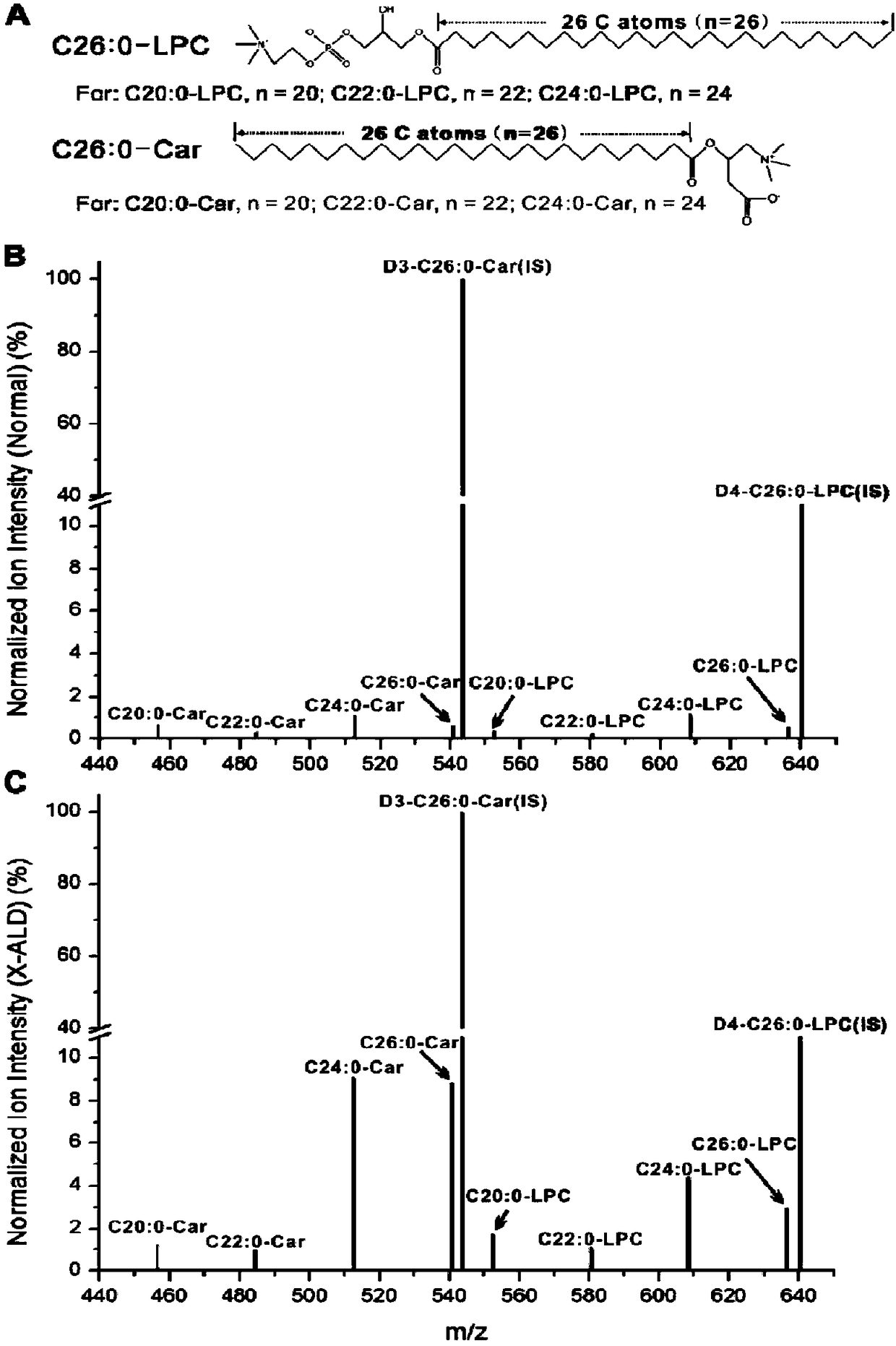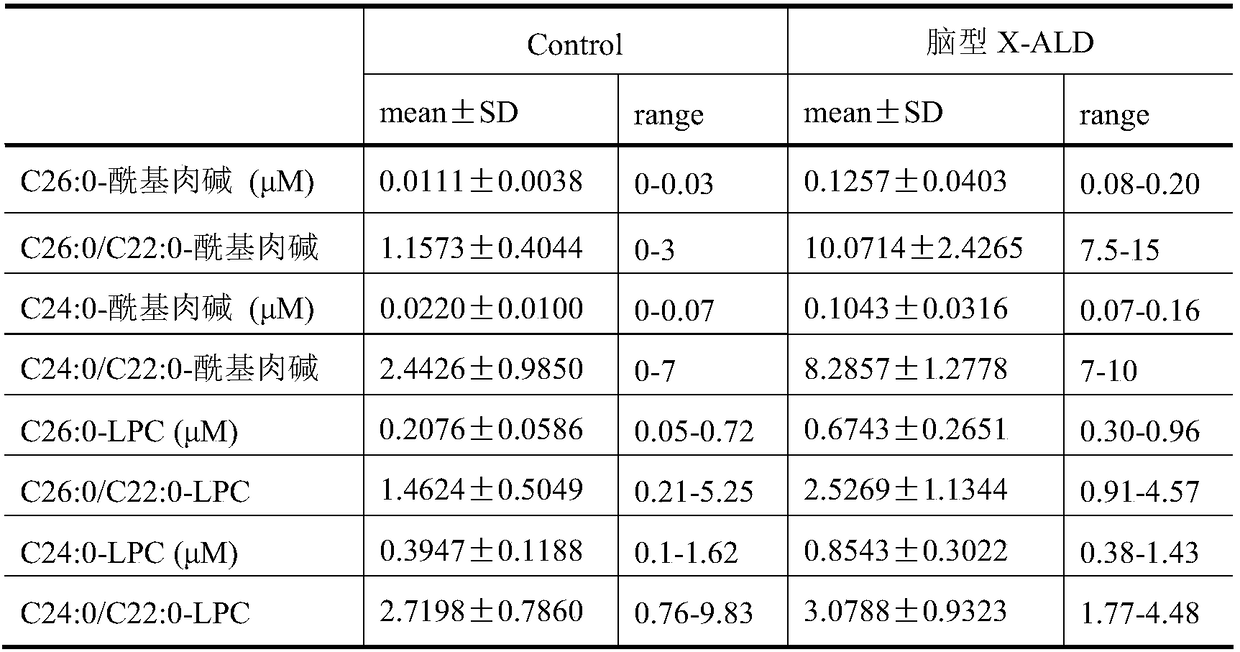Use of C26:0-acylcarnitine as marker of brain-type X-ALD (X-linked adrenoleukodystrophy) disease screening
A technology for acylcarnitines and uses, applied in the field of C26:0-acylcarnitines, can solve the problem of not specifically targeting cerebral ALD cases and the like
- Summary
- Abstract
- Description
- Claims
- Application Information
AI Technical Summary
Problems solved by technology
Method used
Image
Examples
Embodiment Construction
[0018] Detection method
[0019] Source of samples The new screening center of Shanghai Children's Hospital collected 7 samples of brain-type ALD patients, aged 2-8 years, all male, 4 of them had vision loss or visual impairment, 1 showed mental retardation, All cases underwent MRI examination, all showed leukodystrophic changes. We obtained 5 patients with VLCFAs analysis results, the other 2 patients we did not get the analysis results for other reasons. In the results of 5 cases, C26:0-VLCFA, C26:0 / C22:0-VLCFA and C24:0 / C26:0-VLCFA all exceeded the normal value, and the C24:0-VLCFA of 2 patients also exceeded the normal value value. The ABCD1 gene sequencing results of 7 patients showed that the gene had missense mutations or frameshift mutations. In conclusion, these 7 patients were diagnosed as patients with cerebral ALD. We collected blood samples from 3496 healthy neonates from the New Screening Center of Shanghai Children's Hospital as controls. All blood samples ...
PUM
 Login to View More
Login to View More Abstract
Description
Claims
Application Information
 Login to View More
Login to View More - R&D
- Intellectual Property
- Life Sciences
- Materials
- Tech Scout
- Unparalleled Data Quality
- Higher Quality Content
- 60% Fewer Hallucinations
Browse by: Latest US Patents, China's latest patents, Technical Efficacy Thesaurus, Application Domain, Technology Topic, Popular Technical Reports.
© 2025 PatSnap. All rights reserved.Legal|Privacy policy|Modern Slavery Act Transparency Statement|Sitemap|About US| Contact US: help@patsnap.com



